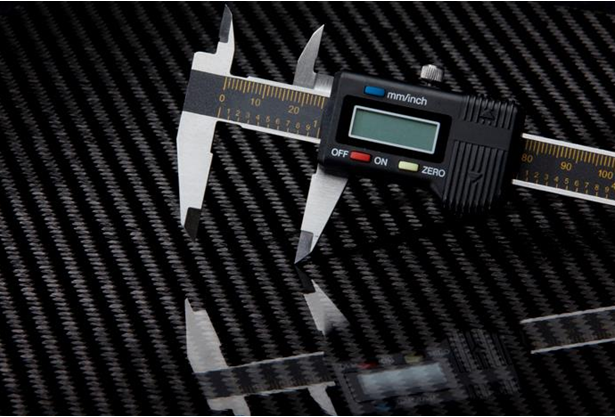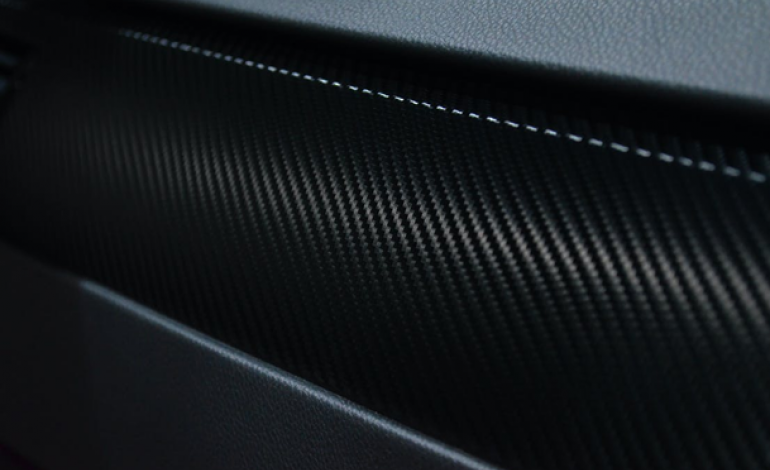One of the most common questions surrounding carbon fiber sheets, panels, and other products is “is carbon fiber UV stable?” The answer is not quite as simple as a “yes” or “no” and requires a little bit of insight into how carbon fiber suppliers make their products, as well as what threats UV poses. Here’s what you need to know.
How Is Carbon Fiber Made?
All carbon fiber suppliers start the manufacturing process in the same basic way. Carbon fiber panels, fabric, sheets, and all other products are made from a collection of carbon fiber strands that are thinner than a human hair.
These fibers are made from a polymer precursor material known as PAN (which stands for polyacrylonitrile and contains carbon). This is a plastic that is spun into very fine fibers, then washed and stretched to a very fine diameter that helps to ensure that the carbon fiber crystals it contains are very tightly bonded.
These fibers are then heated in an oxygen-controlled environment, which adds oxygen to the fibers, changing the bonding structure from linear to ladder-shaped. This is known as a cross-linked polymer, and this form of bonding is one of the reasons that gives carbon fiber such high strength, high flexibility, and overall high performance.
After this, the fibers are heated again, this time in an oxygen-free environment that forces all of the impurities from the matrix, leading pure carbon fiber behind. After this process, all that remains are tightly-linked carbon crystals that are exceptionally lightweight and strong.
These carbon fibers can then be wound into collections called Tows before being woven into sheets. The next step is where the issue with UV light arises.
These pure carbon fibers themselves are not only UV stable; they are effectively UV-impervious. So, in one sense, to answer the question “is carbon fiber itself UV-stable?” the answer is yes.
However, after being woven into sheets or panels, the next step in the process is to add epoxy resin.
Why Do Carbon Fiber Suppliers Add Epoxy Resin to the Carbon Fiber Matrix?
Carbon fiber manufacturers add epoxy resin to carbon fiber sheets and panels for several reasons. One is that epoxy resin is one of the few materials that will both penetrate and adhere to carbon fiber.
Another is that epoxy resin makes carbon fiber stronger. It reinforces the weave with dimensional stability when stresses, such as compression, torsion, or shear forces are applied. It also fixes the fibers in a specific geometric arrangement. This prevents misplacement of the fiber tows that can weaken the matrix.
Another reason is aesthetics. Because the resin fixes the fibers in place, it prevents a cosmetic disruption of the weave. The epoxy resin is also responsible for the high-gloss finish of many carbon fiber products. Unfortunately, some epoxy resins are not UV-resistant.
What Dangers Does UV Light Pose?

Ultraviolet, or UV light, is a form of electromagnetic radiation with wavelengths just beneath those of the visible spectrum. It is comprised of three main types: UVA, UVB, and UVC light, in order of descending wavelength, from 400nm to 100nm.
UVC light is the most damaging of these wavelengths and causes irreparable cell damage. This is also the wavelength that is responsible for most damage to certain other organic materials. For example, UV light can cause damage to certain synthetic polymers, such as PVC and certain rubbers. They become discolored and brittle with UV exposure and can even crack or crumble. This is known as UV degradation and it is a real challenge for synthetic materials producers.
UV light can also damage the epoxy that binds carbon fiber products. With prolonged exposure to UV radiation, the chains of polymers within the epoxy will break down, causing yellowing, fading, cracking, and crumbling.
While the UV light does not destroy the carbon fibers themselves, it can cause the premature degradation of sheets and panels by degrading their epoxy resin. In this respect, not all carbon fiber products are UV stable.
What Can Be Done About It?

Luckily, many carbon fiber suppliers use UV-resistant epoxy resin to finish their carbon fiber products.
We use a vacuum infusion process to inject the carbon fiber with UV-stabilized epoxy with a low density and high compressive strength. This actually strengthens the carbon fiber composite matrix without adding very much weight. It also gives it an added layer of resistance to UV radiation.
For these reasons, products that are made with UV-resistant carbon fiber are suitable in many of the following industries in which exposure to sunlight is inevitable:
- Aerospace and engineering
- Automotive parts and accessories
- Marine parts
- Sporting goods and accessories
- Medical equipment
- Robotics and manufacturing
- Consumer goods, including knives and other products for outdoorsmen
Fading, yellowing, and cloudiness are common signs of UV damage, and to some degree, with enough exposure to the elements, all carbon fiber will experience some UV damage.
Whether your carbon fiber is made with UV-stable epoxy resin or not, it may be possible to restore it.
If your carbon fiber has no cracks and is only slightly yellowed or faded, you may be able to sand off the damaged epoxy and re-apply a fresh clear coat.
Use only very high grit sandpaper to prevent removing excess stock. Sand very lightly, and pay attention to the color of the dust; epoxy dust will be brownish, white, or yellowish. If it’s gray or black, stop immediately. This means you’re sanding too deep and are damaging the carbon fiber.
Once you’ve removed the layer of epoxy that was damaged by UV, apply a new clear coat finish to restore its high-gloss appearance.
Carbon Fiber Questions? Call Us!
We are your source for high carbon fiber products for the automotive, aerospace, medical industries, and many others. We stand by our products and offer a 100% satisfaction guarantee. If you’re considering a project that involves the use of the finest carbon fiber products in the composites industry, please contact us!
If you are interested in learning more about our cutting-edge, high-quality carbon fiber products and composite materials? Feel free to consult our carbon fiber resources or get in touch with our customer service team directly at 360-573-7800.

